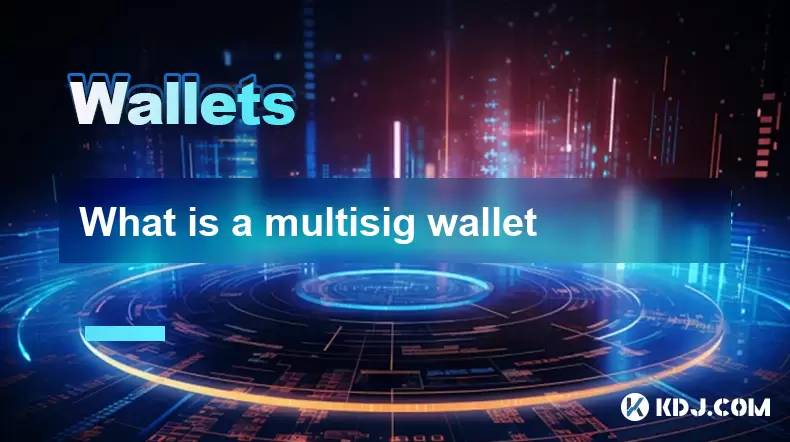-
 Bitcoin
Bitcoin $118,841.1054
1.02% -
 Ethereum
Ethereum $3,364.2689
7.44% -
 XRP
XRP $3.0337
3.93% -
 Tether USDt
Tether USDt $1.0004
0.04% -
 BNB
BNB $708.2059
2.49% -
 Solana
Solana $173.2385
5.74% -
 USDC
USDC $0.9999
-0.01% -
 Dogecoin
Dogecoin $0.2121
6.85% -
 TRON
TRON $0.3090
2.81% -
 Cardano
Cardano $0.7628
2.25% -
 Hyperliquid
Hyperliquid $46.8391
-2.08% -
 Stellar
Stellar $0.4537
0.15% -
 Sui
Sui $3.9529
-2.88% -
 Chainlink
Chainlink $16.6414
3.72% -
 Hedera
Hedera $0.2354
1.52% -
 Bitcoin Cash
Bitcoin Cash $499.1285
0.43% -
 Avalanche
Avalanche $22.6400
0.57% -
 Shiba Inu
Shiba Inu $0.0...01438
4.88% -
 UNUS SED LEO
UNUS SED LEO $8.8507
-0.64% -
 Toncoin
Toncoin $3.1498
2.35% -
 Litecoin
Litecoin $97.4954
1.21% -
 Polkadot
Polkadot $4.1541
1.50% -
 Monero
Monero $331.4406
-1.03% -
 Pepe
Pepe $0.0...01350
5.24% -
 Uniswap
Uniswap $8.9103
-5.01% -
 Bitget Token
Bitget Token $4.7540
4.51% -
 Dai
Dai $0.9999
-0.02% -
 Ethena USDe
Ethena USDe $1.0008
0.00% -
 Aave
Aave $322.3328
-1.63% -
 Bittensor
Bittensor $431.8026
-0.50%
Ledger vs Trezor which is better?
Ledger uses a secure chip for offline crypto storage, while Trezor relies on open-source firmware, offering transparency but requiring regular updates for security.
Jul 16, 2025 at 07:01 am

What is the Difference Between Ledger and Trezor?
When comparing Ledger and Trezor, both are hardware wallets designed to securely store cryptocurrencies offline. However, their approaches differ in terms of security architecture, supported coins, user interface, and software integration. Ledger utilizes a Secure Element (SE) chip, which is a certified component commonly used in banking and government systems, offering an extra layer of protection against physical attacks. On the other hand, Trezor uses open-source firmware, allowing for greater transparency but potentially exposing it to vulnerabilities if not updated regularly.
The distinction between these two lies in how they handle private keys and firmware updates. Ledger isolates private keys within the SE chip, ensuring that even if malware infects the connected device, the keys remain secure. In contrast, Trezor stores private keys in a microcontroller, relying on strong encryption and regular firmware patches to maintain security.
How Do Ledger and Trezor Handle Security Features?
Security is paramount when choosing a hardware wallet, and both Ledger and Trezor offer robust features to protect digital assets. Ledger Nano S Plus and Nano X come with built-in PIN code protection, recovery phrases, and optional passphrase support for added layers of security. Trezor Model T and Trezor One also provide similar functionalities, including PIN entry and seed phrase backup.
One notable difference is Ledger’s use of BOLOS (Blockchain Open Ledger Operating System), which allows multiple apps to be installed directly onto the device without compromising security. This system ensures that each cryptocurrency operates in its own isolated environment. Trezor’s firmware, being open source, undergoes continuous community review, which can lead to faster identification and resolution of potential security flaws.
Another key point is physical tamper resistance—Ledger devices are designed to self-destruct if someone attempts to physically access the chip, while Trezor relies more on software-based protections.
Which Wallet Supports More Cryptocurrencies?
Both Ledger and Trezor support a wide range of cryptocurrencies, but there are subtle differences in coverage and ease of use. Ledger Live, the desktop and mobile application, supports over 1,800 coins and tokens, including major ones like Bitcoin, Ethereum, Litecoin, and Ripple (XRP). It also allows users to install specific apps for each coin, giving them granular control over which currencies are active on the device.
Trezor Suite, the official software for Trezor wallets, supports slightly fewer coins than Ledger but still covers all major blockchains. Notably, Trezor does not support certain tokens on smart contract platforms as seamlessly as Ledger, requiring third-party integrations like Electrum or MyEtherWallet for full functionality.
For users who hold ERC-20 tokens or Binance Smart Chain assets, Ledger provides better native support through its app system, while Trezor users may need to rely on external tools for full compatibility.
What About User Experience and Interface Design?
User experience plays a significant role in choosing between Ledger and Trezor. Ledger Live offers a sleek, intuitive interface that simplifies managing crypto portfolios across multiple devices and accounts. It integrates well with popular exchanges and DeFi platforms, making transactions straightforward.
Trezor Suite, although functional, has a more minimalistic design that some users might find less visually appealing compared to Ledger Live. However, Trezor’s open-source nature means developers can contribute improvements, potentially leading to faster updates and customizations.
In terms of device navigation, Ledger Nano X includes Bluetooth connectivity for mobile use, enhancing convenience. Meanwhile, Trezor Model T uses a touchscreen for interaction, which can be faster for confirming transactions but may pose durability concerns over time.
Both wallets require careful handling during setup, especially when recording the 24-word recovery phrase, which must be stored securely offline.
How Do Firmware Updates and Customer Support Compare?
Firmware updates are crucial for maintaining wallet security and performance. Ledger releases frequent updates via Ledger Live, often accompanied by detailed release notes explaining bug fixes and new features. The update process is generally smooth and guided step-by-step within the app.
Trezor also pushes regular firmware updates, but since its firmware is open source, some advanced users prefer manually verifying and installing updates. This approach adds a layer of trust but may be intimidating for beginners.
Customer support differs significantly—Ledger offers email support with response times varying based on region and issue complexity, while Trezor provides extensive documentation and community forums. Neither company offers 24/7 live chat support, so users should expect delays during high-demand periods.
Frequently Asked Questions
Is it possible to recover funds if I lose my Ledger or Trezor device?
Yes, both wallets allow fund recovery using the 24-word recovery phrase. As long as this phrase is safely stored and not compromised, users can restore their wallet on a new device.
Can I use the same recovery phrase on both Ledger and Trezor?
No, each wallet generates unique recovery phrases due to different cryptographic algorithms and derivation paths. Attempting to import one into another may result in inaccessible funds.
Which wallet is easier for beginners to set up?
Ledger Live offers a more guided setup process with visual instructions, making it more beginner-friendly. Trezor requires more manual configuration, particularly for advanced features.
Do either of these wallets support staking directly from the hardware device?
Neither Ledger nor Trezor allows direct staking from the device itself, but both can interact with trusted staking platforms and wallets such as Ethereum 2.0 clients or Tezos staking services through their software interfaces.
Disclaimer:info@kdj.com
The information provided is not trading advice. kdj.com does not assume any responsibility for any investments made based on the information provided in this article. Cryptocurrencies are highly volatile and it is highly recommended that you invest with caution after thorough research!
If you believe that the content used on this website infringes your copyright, please contact us immediately (info@kdj.com) and we will delete it promptly.
- California Dreamin' Web3: Coinbase, Ripple, and the Golden State's Crypto Embrace
- 2025-07-17 10:30:12
- Navigating the Base Ecosystem: Investment Targets and Strategic Restructuring
- 2025-07-17 10:50:12
- Whale Trading, Market Impact, and Cryptocurrency: Navigating the Waters
- 2025-07-17 10:50:12
- Trump, World Liberty Financial, and the WLFI Token: From Locked to Listed?
- 2025-07-17 10:55:12
- Meme Coins in 2025: Investing in the Hype or the Future of Crypto?
- 2025-07-17 11:10:12
- Talos Acquires Coin Metrics: A Major Move in Crypto Consolidation
- 2025-07-17 11:00:12
Related knowledge

What is a hardware wallet's secure element
Jul 11,2025 at 10:14pm
What is a Hardware Wallet's Secure Element?A hardware wallet is one of the most secure ways to store cryptocurrencies. Unlike software wallets, which ...

How to track crypto whale wallets
Jul 16,2025 at 10:00am
What Are Crypto Whale Wallets?Crypto whale wallets refer to large cryptocurrency holdings controlled by individuals or entities that have the potentia...

What is the difference between a custodial and non-custodial wallet
Jul 13,2025 at 03:21am
Understanding Wallet Types in CryptocurrencyIn the world of cryptocurrency, digital wallets play a crucial role in managing and securing assets. A wal...

What is a multisig wallet
Jul 16,2025 at 01:42am
Understanding the Concept of a Multisig WalletA multisignature (multisig) wallet is a type of cryptocurrency wallet that requires more than one privat...

How to add a new network to MetaMask
Jul 11,2025 at 11:42pm
Understanding the Need to Add a New NetworkWhen using MetaMask, a popular Ethereum-based cryptocurrency wallet, users often need to interact with diff...

How to add Ethereum L2 networks like Arbitrum to Trezor
Jul 11,2025 at 12:36am
What Is Ethereum L2 and Why Add It to Trezor?Ethereum Layer 2 (L2) networks, such as Arbitrum, are scaling solutions designed to reduce congestion on ...

What is a hardware wallet's secure element
Jul 11,2025 at 10:14pm
What is a Hardware Wallet's Secure Element?A hardware wallet is one of the most secure ways to store cryptocurrencies. Unlike software wallets, which ...

How to track crypto whale wallets
Jul 16,2025 at 10:00am
What Are Crypto Whale Wallets?Crypto whale wallets refer to large cryptocurrency holdings controlled by individuals or entities that have the potentia...

What is the difference between a custodial and non-custodial wallet
Jul 13,2025 at 03:21am
Understanding Wallet Types in CryptocurrencyIn the world of cryptocurrency, digital wallets play a crucial role in managing and securing assets. A wal...

What is a multisig wallet
Jul 16,2025 at 01:42am
Understanding the Concept of a Multisig WalletA multisignature (multisig) wallet is a type of cryptocurrency wallet that requires more than one privat...

How to add a new network to MetaMask
Jul 11,2025 at 11:42pm
Understanding the Need to Add a New NetworkWhen using MetaMask, a popular Ethereum-based cryptocurrency wallet, users often need to interact with diff...

How to add Ethereum L2 networks like Arbitrum to Trezor
Jul 11,2025 at 12:36am
What Is Ethereum L2 and Why Add It to Trezor?Ethereum Layer 2 (L2) networks, such as Arbitrum, are scaling solutions designed to reduce congestion on ...
See all articles

























































































